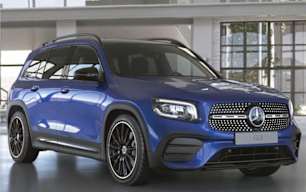The Ford Escape looks like it has all the bits to make a midsize SUV buyer happy. And while a fair few of the boxes are ticked, there are some elements that could be better.
The big party trick is that the second row is on rails, so you can slide it forwards or backwards to improve the space for receipt occupants or improve your boot space. The maximised cargo area is 556 litres to the ceiling, while if prioritise second-row occupant space there is easily enough room for a 182cm / 6’0” adult to fit behind someone of a similar size.
In the boot there are remote levers for the second row seats to fold down, a 12 V outlet, and a soft parcel shelf which is easy to remove, too.
During my time with the car I had the seats slid back as far as they go to maximise cabin space, though I did test out whether it was worth having them forward and the boot space was appreciably better especially for a pram and some baby stuff.
The second-row is a 60:40 split for the backrest, with the smaller portion on the driver’s side. That may sound trivial, but we had our baby seat set up behind the passenger, and had to move it to the driver’s side when we picked up a large parcel as it wouldn’t fit with the smaller portion folded down. There are dual ISOFIX child seat anchor points for the outboard positions, and three top-tether hooks.
The boot space is good too, considering it has some extra hardware to contend with under the body, there is also a space-saver spare wheel under there which is nice. However, there is no dedicated hidey hole for the charge cable, and it doesn’t come in a nice stowable bag either - just a plastic ziplock thing.
Perhaps the biggest letdown of the interior is the fact that you still get the tiny little tablet-style 8.0-inch touchscreen media display, despite there being a big 12.3-inch digital instrument cluster. The two screens almost look at odds with one another, and what’s even more frustrating is that the driver information screen cannot be configured to include the energy flow screen that you see on the smaller tablet style unit.
That means you can’t watch what’s happening between engine, electric motor and battery, or a combination where you might expect to see that - instead it can only be seen in illustrative form on the smaller central screen. Big issue? Maybe not, but if you’re an eco-conscious customer who wants to know what their car’s high-tech powertrain is doing, while also wanting to use sat nav, or Apple CarPlay or Android Auto, or change the radio station… Well, you’re out of luck.
There is a much more basic and rudimentary display on the driver info screen that shows a small icon of an engine and battery and illuminates them when each part is in use, but really, Ford should have used the real-estate of the big driver info screen better. Toyota, Kia and Hyundai know how to do it better.
The material quality is okay, but it certainly doesn’t feel like a very special environment.There are rubberised liners on the doors which don’t look terrific or feel fantastic, and why there are soft plastic elbow pads, and up high on the dashboard, it is not of the most pristine quality.
Storage is pretty good. There are bottle holders in the doors and two cupholders in the centre console, and the storage nook in front of the shift dial houses a wireless phone charger and two USB ports, plus a 12-volt plug. There is a strange little shelf section in front of the centre console bin, which is not fantastic in terms of size. There are rear bottle holders in the doors, map pockets and a flip-down arm-rest with cup holders.
That rotary dial shifter which does take a little bit of getting used to. Unlike some others, there is no ‘P’ for park button - instead you have to dial it all the way left.






